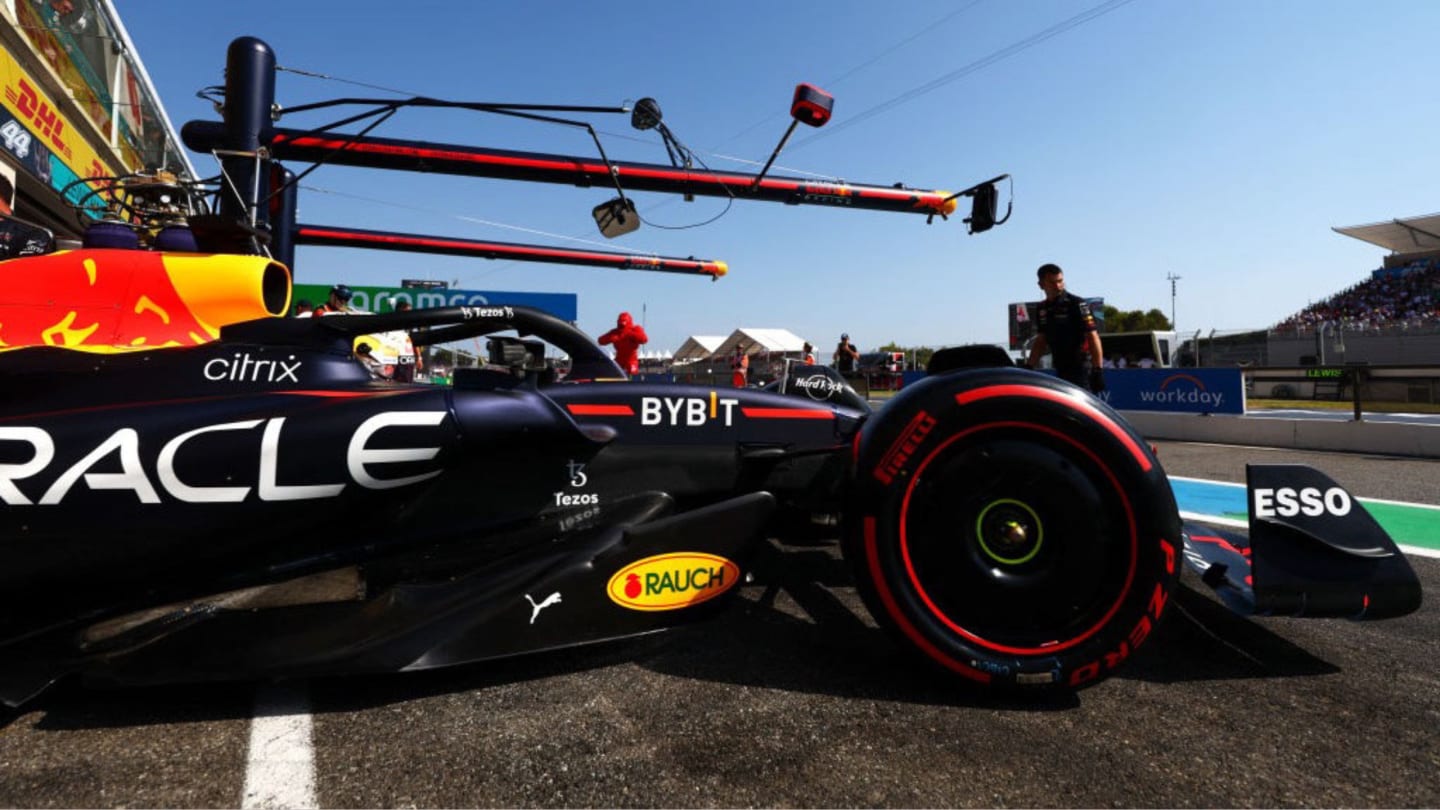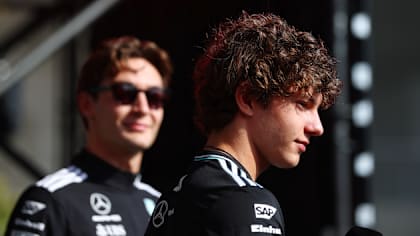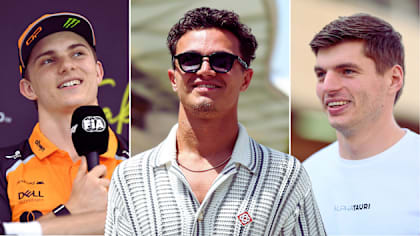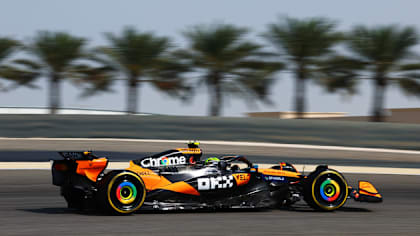
Feature
STRATEGY GUIDE: What are the possible race strategies for the 2022 French Grand Prix?

Share

The final double-header before the mid-season break kicks off with what is expected to be a hot race at Paul Ricard, so let’s take a look at the different strategic options available to the teams in France…
What’s the quickest strategy?
Last time out in Austria, the one-stop appeared to be the quickest way to run the race in clear air, but that plan was hindered by overnight rain that left a green track and then Ferrari pushing the pace to force Red Bull into a two-stopper.
And this week we’ve got a similar scenario where the one-stop is theoretically quickest – but it’s far from perfect.
READ MORE: Sainz tows Leclerc to first French Grand Prix pole as Verstappen qualifies second
High levels of degradation mean there will be some tyre management needed but the key point that has led to a one-stopper being a strong option at this stage is the pit lane. The exit point has been extended by roughly 90 metres, meaning drivers are on the pit lane limiter for more time and therefore taking longer to get through the pits, and that’s accentuated by the speed limit being dropped to 60 kilometres an hour, adding further time.
So a green flag pit stop now costs drivers around 27 seconds and will mean they want to avoid making two stops if possible, so the fastest route to the end on average is a one-stopper starting on the medium tyre. The soft compound is not a tyre that is particularly useful for the opening stint, but the medium allows drivers to run to a pit window between Lap 18 and Lap 27 before switching to the hards and running to the end.
There will be some tyre management involved due to the expected high track temperatures, but the hard is a compound that should see teams through to the end of the race if they opt for this strategy and don’t suffer excessive degradation.
)
How about a different option for the top 10?
As we saw last time out at the Red Bull Ring, sometimes the pace from a chasing car can force a driver to take more out of their tyres, or a team might be struggling to look after their Pirellis a little bit more in general, so there are definitely two-stop options that can come into play.
There are two potential strategies that are likely to come to the fore for teams that are unable to make the one-stopper work, and both of them involve starting on the medium tyre and running a similar number of laps before the first pit stop. With an opening pit window between Lap 13 and Lap 20, there’s a lot of variation to allow drivers to have an aggressive first stint if needed, and then in both strategies switch to the hard compound for the middle stint.
But this is where the two choices diverge, and it all depends on the tyre compounds that a driver has left available for the race.
For any driver with two sets of mediums available – that’s Charles Leclerc, Carlos Sainz, Alex Albon and Nicholas Latifi – the middle stint needs to take them up to at least Lap 34 (but ideally closer to Lap 40) before they can return to the mediums for the final stint. Doing this also opens up the possibility of extending that second stint to the end of the race as long as the opening stint wasn’t too short.
For the rest of the drivers with two sets of hard tyres available – Red Bull, Mercedes, Alpine, Alfa Romeo, Haas and Lando Norris – then you’ve probably guessed the final stint will be on the hard compound. That leaves them a pit window of between Lap 31 and 37 to make the second stop, although it could be a wider one given the life of the hard tyre.
)
What are the options for the bottom half of the field?
If you’ve been doing a bit of adding up you’ll have noticed that not every driver is included in the above scenarios. That’s because Daniel Ricciardo, Sebastian Vettel and Lance Stroll all only have one set of medium and one set of hard tyres available.
That automatically limits what their options are for the race, but there is a different way of running the one-stopper mentioned earlier on. To try and take advantage of potential opportunities, the hard tyre could be used for a long first stint. As the hard tyre in Paul Ricard is Pirelli’s C2 compound, it is not having any issues with warm-up in the high temperatures but can still be managed for an extended stint.
FACTS AND STATS: Leclerc moves ahead of Massa into third on Ferrari's list of pole-sitters
The pit window would be between Lap 28 and Lap 35 – with a focus on trying to go as long as possible - before switching to medium tyres to the end of the race.
If, however, any of those three drivers (or anyone else who wants to try that strategy) struggles in the closing stages, then a short stint of around 10 laps on the soft tyre could be considered as the track cools later in the afternoon and the fuel burns off, but it’s a risk as that compound has been prone to overheating during this weekend and needs cool-down laps.
)
Wait, but what’s the weather doing?
It’s a pretty straightforward weather forecast for the teams for the race, and it’s also a familiar one as the Grand Prix is set to see very similar conditions to qualifying. That means high temperatures – in the low-to-mid 30s in terms of Celsius – and no risk of rain.
The sun brings the track temperature up quickly too, and the tarmac could be touching 60C early on, which will play a part in having to prevent the tyres from overheating and all but rules out the soft compound for the first stint.
HIGHLIGHTS: Watch the action from a dramatic qualifying session at the French Grand Prix
While the soft tyre can still deliver quick lap times if cooled down between push laps, drivers don’t have that luxury to drop their pace significantly in a racing scenario.
)
There were hints in qualifying that the wind can also play a factor at Paul Ricard, and even if it isn’t strong its direction could be important.
A tailwind on the back straight into the chicane and on the run to Signes will make the DRS effect less prominent and overtaking more difficult, although it will also make braking more of a challenge.
That’s the direction the wind is expected to be coming from, but the flip side is that will make it a headwind into Turn 1 and could help the DRS on that part of that track, as well as increase the slipstream effect and provide opportunities here.
WATCH: Ride onboard for Charles Leclerc's pole-winning lap at Circuit Paul Ricard
YOU MIGHT ALSO LIKE
News Antonelli explains ‘main difference’ between himself and Russell as he assesses where to improve
FeatureF1 Unlocked PADDOCK INSIDER: Three different winners from the first three races – but who will come out on top in the scorching heat of Bahrain?
Feature BAHRAIN GRAND PRIX – Read the all-new digital race programme here
Report FP1: Norris sets the pace during first practice in Bahrain as six rookies join the action




